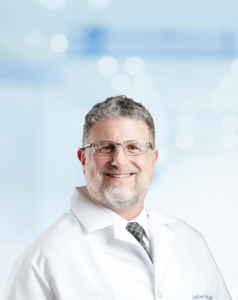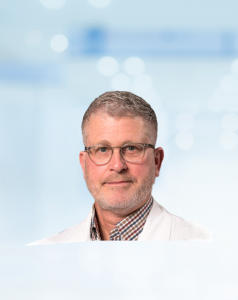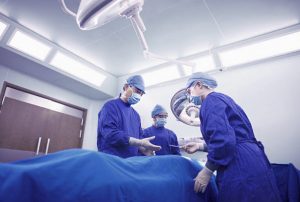Posterior Cervical Fusion
Posterior Cervical Fusion (PCF) is the general term used to describe the technique of surgically mending two (or more) cervical spine bones together along the sides of the bone using a posterior (back of the neck) incision. PCF may be performed in conjunction with or without a posterior decompression (laminectomy) and/or instrumentation (use of metal screws/rods).
Nowadays, metal screws and rods are almost always used, which adds immediate stability and increases the fusion rate (percentage of patients where the bone successfully mends together). PCF is most commonly performed for patients with cervical fractures or instability but is also performed for a variety of other spinal conditions, such as tumors, infections, and deformity. PCF may also be performed in conjunction with anterior cervical surgery, especially when multiple levels are
Surgical Technique
The surgery is performed utilizing general anesthesia. A breathing tube (endotracheal tube) is placed and the patient breathes with the assistance of a ventilator during the surgery. Preoperative intravenous antibiotics are given. Patients are positioned in the prone (lying on the stomach) position, generally using a special operating table/bed with special padding and supports. The surgical region (neck area) is cleansed with a special cleaning solution. Sterile drapes are placed, and the surgical team wears sterile surgical attire such as gowns and gloves to maintain a bacteria-free environment.
A 3-6 inch (depending on the number of levels) posterior (back of the neck) longitudinal incision is made in the midline, directly over the involved spinal level(s). The fascia and muscle are gently divided, exposing the spinous processes and spine bones. An x-ray is obtained to confirm the appropriate spinal levels to be fused. Two small metal screws can be affixed to each spine bone, one on each side, which is then connected together with a titanium metal rod on each side of the spine. The bony surfaces and facet joints are then decorticated and a bone graft is placed, which mends together over time (weeks and months).
The wound area is usually washed out with sterile water containing antibiotics. The deep fascial layer and subcutaneous layers are closed with strong sutures. The skin can usually be closed using sutures or staples. A sterile bandage is applied.
The total surgery time is approximately 2-4 hours, depending on the number of spinal levels involved.
Post-Operative Care
Most patients are able to go home 3-5 days after surgery. Before patients go home, physical therapists and occupational therapists work with patients and instruct them on proper techniques of getting in and out of bed and walking independently. Patients are instructed to avoid excessive bending and twisting of the neck in the acute postoperative period (first 1-2 months). Patients can gradually begin to bend and twist their neck after 2-3 months after the fusion solidifies and the pain subsides. Patients are also instructed to avoid heavy lifting in the postoperative period (first 2-4 months).
- Brace – Most patients are required to wear a neck brace after surgery. This reduces the stress on the neck area and helps improve bone healing and decrease pain in the postoperative period.
- Wound Care – The wound area should remain covered with a gauze bandage secured in place with tape. The area should be kept clean and dry. The bandage should generally be changed every 1-2 days, especially after showering.
- Showering/Bathing – Patients can shower immediately after surgery, but should keep the incision area covered with a bandage and tape, and try to avoid the water from water hitting directly over the surgical area. After the shower, patients should change the bandage, and dry off the surgical area. The dressing should otherwise be changed every 2-3 days when at home. Patients should not take a bath until the wound has completely healed, which is usually around 2 weeks after surgery.
- Driving – Patients may begin driving when the pain has decreased to a mild level and neck range-of-motion is improved, which usually is between 2-6 weeks after surgery. Patients should not drive while taking pain medicines (narcotics). When driving for the first time after surgery, patients should make it a short drive only and have someone come with them, in case the pain flares up and they need help driving back home. After patients feel comfortable with a short drive, they can begin driving longer distances alone.
Patients may return to light work duties as early as 2-4 weeks after surgery, depending on when the surgical pain has subsided. Patients who have undergone cervical fusion at only one level may return to heavy lifting and sports activities if the surgical pain has subsided and the neck strength and mobility have returned appropriately with physical therapy. Patients who have undergone cervical fusion at two or more levels are generally recommended to avoid heavy lifting, laborious work, and impact sports.
Patients will return for a follow-up visit to see the doctor approximately 12-14 days after surgery. Medications will be refilled if necessary. The incision will be inspected and the stitches or staples will be removed. Patients will usually return to see Dr. Spoonamore every 4-6 weeks thereafter, and an x-ray will be taken to confirm the fusion area is stable and healing appropriately. At 8-12 weeks after surgery, patients will be given a prescription to begin physical therapy for gentle neck exercises.
Cost
The cost of PCF is based on several considerations. This can include both the extent of the procedure and a patient’s insurance carrier. Medicare can cover this procedure if it is deemed necessary treatment. BEST accepts Medicare, most private health insurances, and works with workers’ compensation claims and personal injury cases at all of our centers.
Reach out to BEST Health System Today
To learn more about PCF and if it is right for you, contact BEST Health System today. Our caring and experienced team of treatment professionals can help you develop a personalized treatment plan that is right for you. We are dedicated to getting you the quality of life you deserve!
Procedure Doctors
Jeffrey Shall, M.D.
Neuropathy Specialist & Spine and Orthopaedic Surgeon
Advanced Orthopedics & Physical Therapy
Related Articles
What is Posterior Cervical Fusion for Neck Pain?
Chronic neck pain can prevent you from doing the activities and hobbies that you once loved. When left untreated, chronic neck pain can radiate to […]


